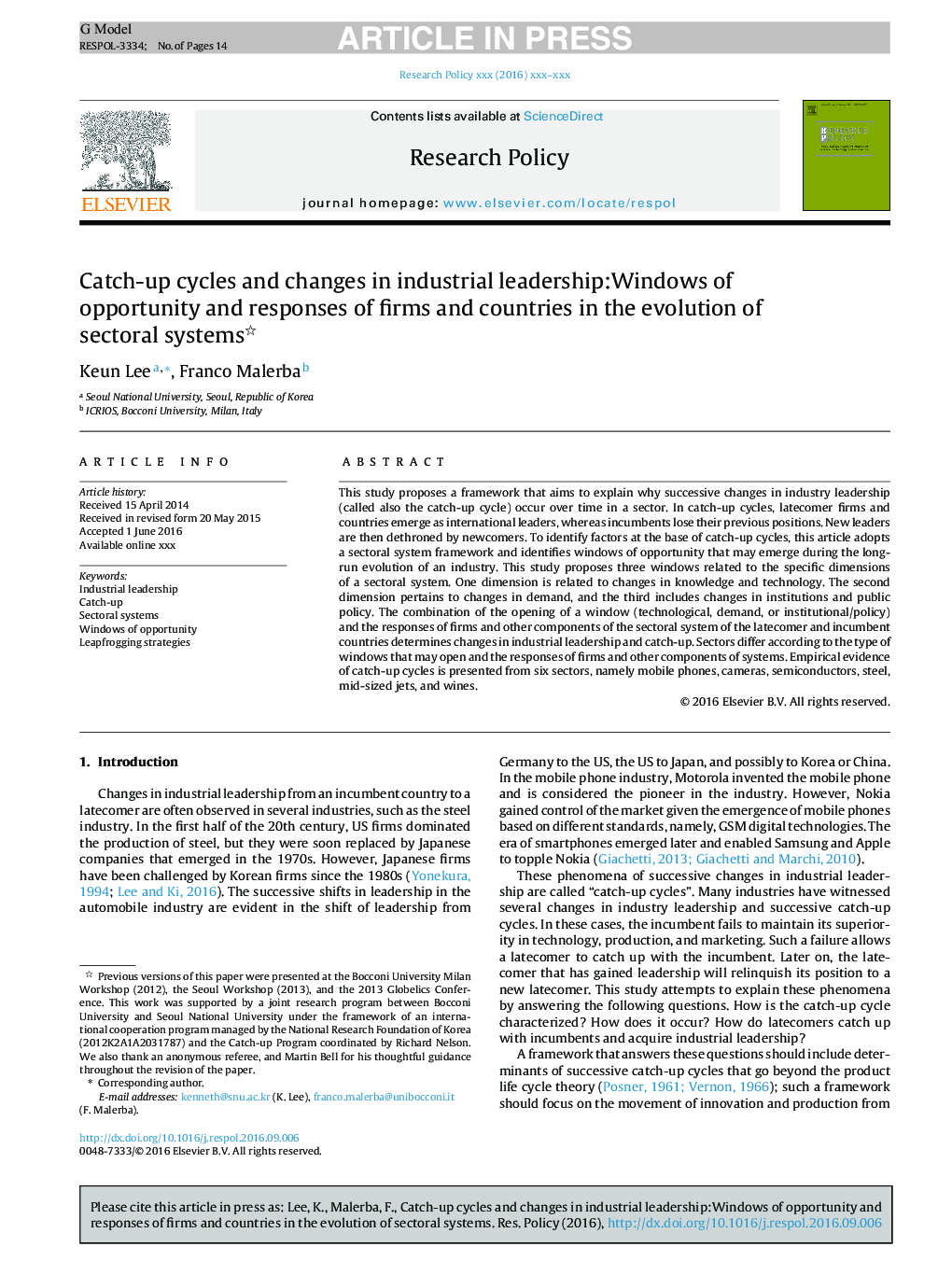| Article ID | Journal | Published Year | Pages | File Type |
|---|---|---|---|---|
| 5104027 | Research Policy | 2017 | 14 Pages |
Abstract
This study proposes a framework that aims to explain why successive changes in industry leadership (called also the catch-up cycle) occur over time in a sector. In catch-up cycles, latecomer firms and countries emerge as international leaders, whereas incumbents lose their previous positions. New leaders are then dethroned by newcomers. To identify factors at the base of catch-up cycles, this article adopts a sectoral system framework and identifies windows of opportunity that may emerge during the long-run evolution of an industry. This study proposes three windows related to the specific dimensions of a sectoral system. One dimension is related to changes in knowledge and technology. The second dimension pertains to changes in demand, and the third includes changes in institutions and public policy. The combination of the opening of a window (technological, demand, or institutional/policy) and the responses of firms and other components of the sectoral system of the latecomer and incumbent countries determines changes in industrial leadership and catch-up. Sectors differ according to the type of windows that may open and the responses of firms and other components of systems. Empirical evidence of catch-up cycles is presented from six sectors, namely mobile phones, cameras, semiconductors, steel, mid-sized jets, and wines.
Keywords
Related Topics
Social Sciences and Humanities
Business, Management and Accounting
Business and International Management
Authors
Keun Lee, Franco Malerba,
